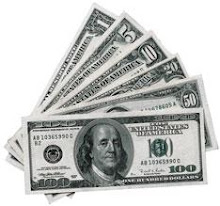Here is a short listing of forms, reports your need to file before Jan 31st:
W-2's for employees
1099's for contractors (not employees)
941 Tax Report
940 FUTA Tax Report
State unemployment Tax Reports
Friday, January 14, 2011
Thursday, December 30, 2010
Year End Bookkeeping Check List
For year end, there a few items you should review to make sure you are not missing expenses on your books or need to pay additional expenses for the tax deduction.
1. Review your taxes paid for the year for payroll, property tax, etc to make sure you have paid them. If you have not you either have to pay them by the 31st or will have to take the deduction in the next year. You can generally pay most taxes online.
2. Verify that you have booked all interest expenses on any loans you have for the business and the loan balances are reflected correctly on your balance sheet.
3. Review any fixed assets you have purchased during the year and check if they are fully depreciable, such as furniture and equipment. You may want to go ahead and expense the depreciation on the books to see where you stand. If the asset is not fully depreciable, for example personal laptop computers, then you can estimate how much of it you can depreciate, for example 75%.
4. If your taxable income is higher than what you would like to pay income tax on, check if there are any outstanding expenses you can pay by the 31st of December.
1. Review your taxes paid for the year for payroll, property tax, etc to make sure you have paid them. If you have not you either have to pay them by the 31st or will have to take the deduction in the next year. You can generally pay most taxes online.
2. Verify that you have booked all interest expenses on any loans you have for the business and the loan balances are reflected correctly on your balance sheet.
3. Review any fixed assets you have purchased during the year and check if they are fully depreciable, such as furniture and equipment. You may want to go ahead and expense the depreciation on the books to see where you stand. If the asset is not fully depreciable, for example personal laptop computers, then you can estimate how much of it you can depreciate, for example 75%.
4. If your taxable income is higher than what you would like to pay income tax on, check if there are any outstanding expenses you can pay by the 31st of December.
Thursday, December 16, 2010
How to enter recurring bills
If you have bills that come in monthly at the same amount and want to enter them in the bill pay system, you can memorize the bill. Let's say you have a monthly internet bill that comes in each month and is due on the 10th of the month for $45.00. You would go to the Vendors tab in Quickbooks and select "Enter Bills". Fill out the information on the bill then select "Memorize Bill." From there you can select to enter it monthly and how many months you want to keep entering the bill and on what day of the month. Because the default due date is 10 days you want to have it entered on the 1st so that you are able to have it due on the 10th of the month. Now when you run your Unpaid Bills report it will automatically appear on the listing each month. This can help save your data entry time.
Sunday, November 21, 2010
How to run the accounts payable report in Quickbooks
There are actually several reports that deal with accounts payable in Quickbooks. There is an A/P (accounts payable) aging report, which shows how old your bills are in groups of 30, 60 or 90 days and above. There is also a vendor balance report, which shows the balances you owe by vendor. However the report I use for reviewing accounts payable is the Unpaid Bills Detail report. This will give you every bill you owe in alphabetical order, along with the aging period of the bill and the due date. You select a due date to see all bills due by that date, say for instance the 1st of the month. From here you can see who you owe, how much, when it was due and make your payment decisions.
Next, how to enter recurring bills.
By Alamo Bookkeeping Associates
Next, how to enter recurring bills.
By Alamo Bookkeeping Associates
Wednesday, October 27, 2010
How to Use the Accounts Payable System in Quickbooks
The system in Quickbooks for accounts payable is called Bill Pay. It works very similar to issuing a check in Quickbooks, but instead you issue a “bill”, which is really an accounts payable. You select under the Vendors tab, “Enter Bills”. Then you select the vendor and enter the information in the fields such as the reference number, which would normally be an invoice number or maybe the period you are paying, for example August. Enter the amount due. You also have a tab for the due date. You can default to the company preference in Quickbooks, for example 10 days, or you can enter a specific due date for the bill. You can enter info in the memo field as well. Then enter the account to expense to and the amount or amounts if there is a breakdown. And that’s it. However, you need to do this for each bill you receive, which is why I advise that it creates more work than just issuing a check.
Next, how to run the accounts payable report in Quickbooks
Next, how to run the accounts payable report in Quickbooks
Subscribe to:
Comments (Atom)
